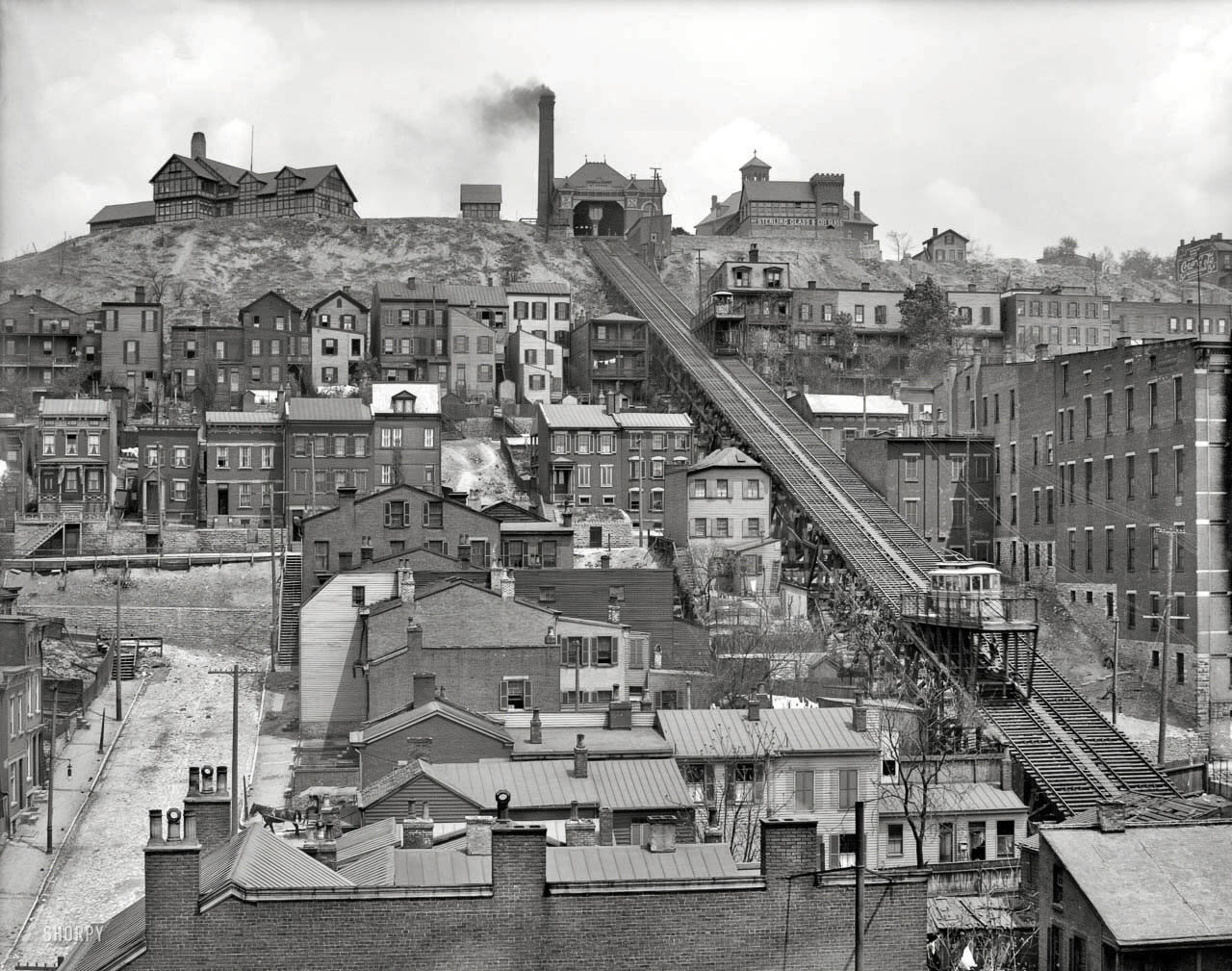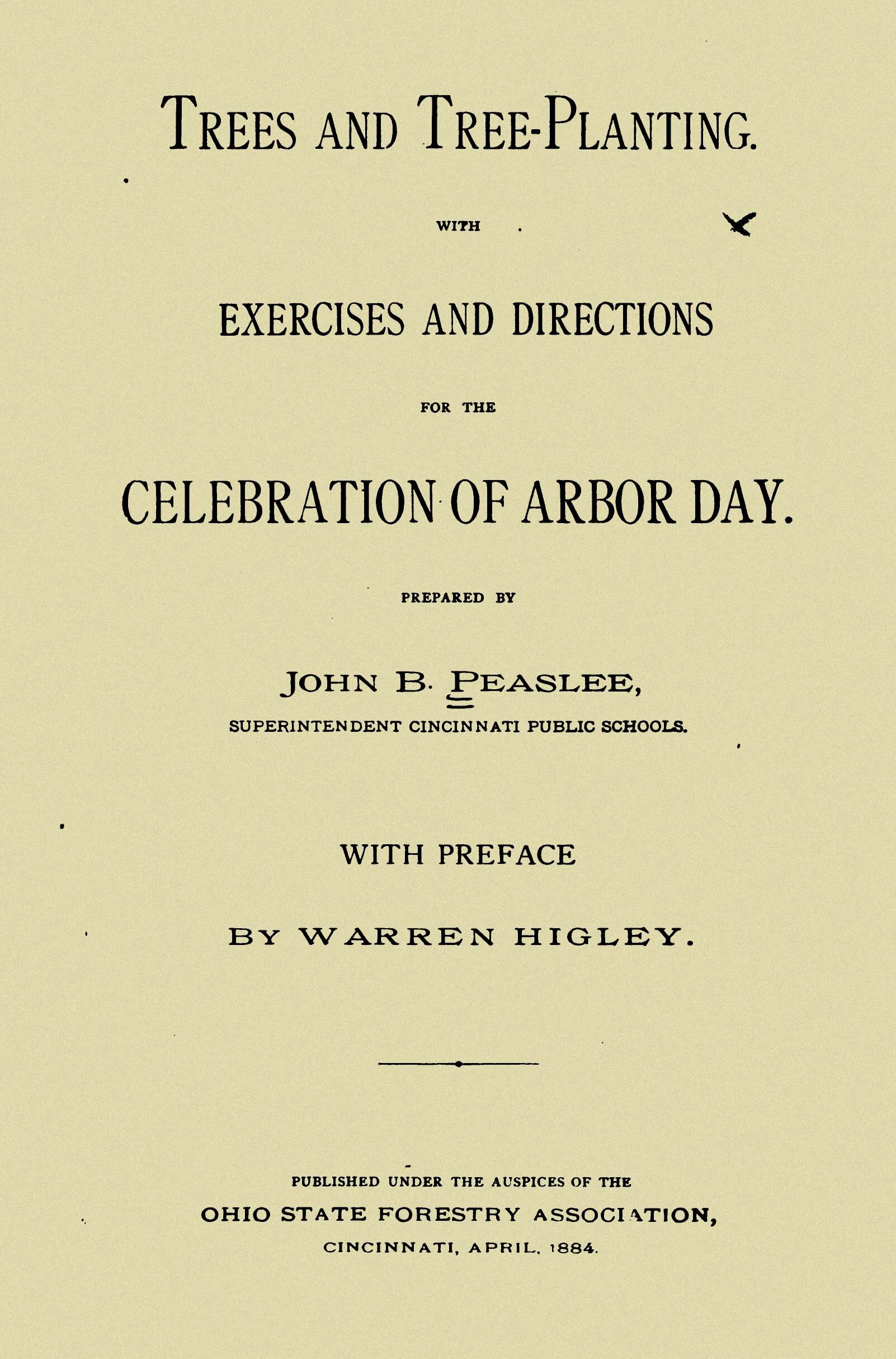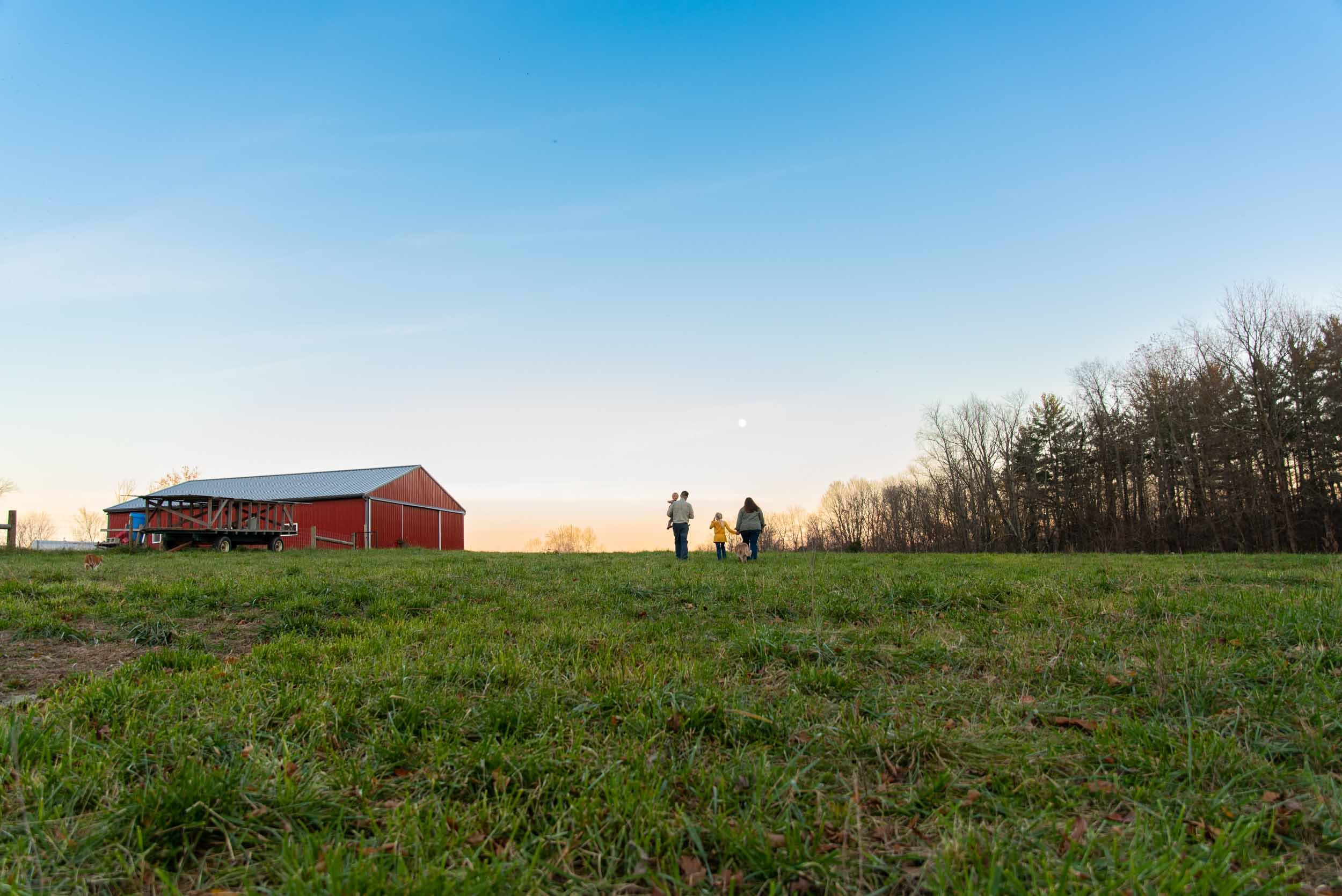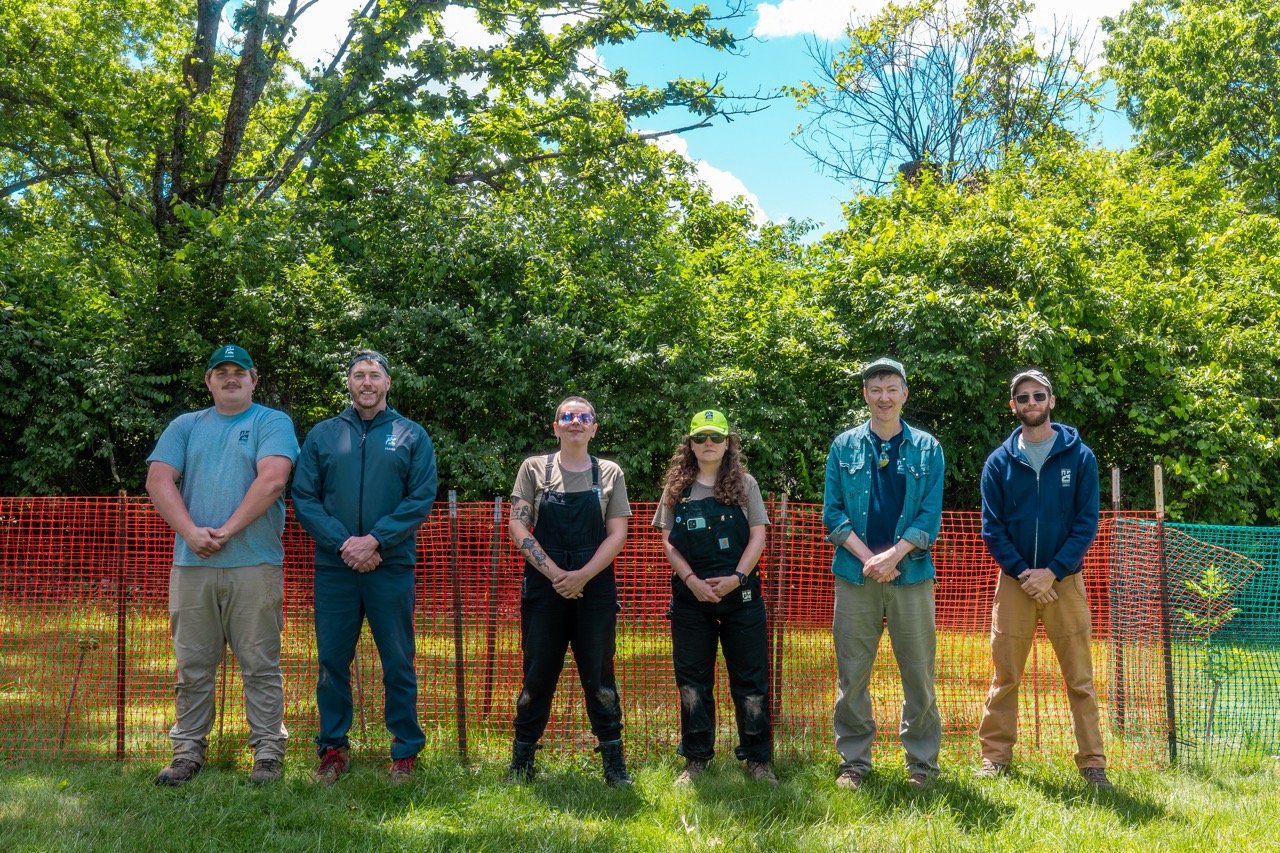Planting a Sustainable Future

More than 120 years ago, Cincinnati led the nation in planting trees to offset massive environmental damage wrought by the Industrial Age. Can we do it again?
This story begins with a crisis.
Once upon a time, in a productive, thriving nation that constructed some of the greatest cities and tallest skyscrapers, a shortage occurred. Once green and plentifully forested, the land that continued to build and mass-produce saw the very resources it needed to extend its empire disappear under the swing of the axe and grind of the saw, until most of its terrain was barren and treeless.
Sound like a familiar story? There was a time in U.S. history, at its industrial peak, when the country faced extreme depletion of natural resources. What may not be as familiar is the city that led the national challenge to conserve, protect and replant forests. That unlikely city, a beacon of light amidst environmental devastation, was your city: Cincinnati.
On April 27, 1882, John B. Peaslee, the superintendent of Cincinnati Public Schools, released school children from classes to plant trees in Eden Park (right). The same week, the city hosted the first annual American Forestry Congress to discuss “subjects relating to tree planting: the conservation, management, and renewal of forests.”
The late 1800s brought great industrial and technological advancement to the United States, while fostering the development and expansion of many great cities. Cincinnati saw rapid industrial growth as a central shipping port on the Ohio River and was the fastest-growing city in the nation between 1835 and 1850.
However, it also became one of the most environmentally ravaged cities by the end of the century. Land-clearing for agriculture and harvesting timber for building material and fuel for the industrial age left virtually no trees standing in the region.
Cincinnati leaders stepped into the crisis, collaborating with others across the country, to start the nation’s first large-scale green initiative. From encouraging schoolchildren to plant trees (in what’s now Eden Park), to pioneering the American Forestry Association to hosting the nation’s first annual Forestry Congress that called for the conservation, management and renewal of forests, Cincinnati helped pave the way in early national reforestation efforts.
Planting for the Future
Cincinnati remains at the forefront of addressing ongoing and new environmental threats like global climate change and exotic pests that threaten our plants and trees. Guided by a citywide plan with action items on how Cincinnati can reduce its contribution to global climate change, the city is diligently working to address the environmental issues it faces as one of more than 1,000 U.S. cities that has committed to reducing its carbon footprint, according to the City of Cincinnati’s website.
Part of Cincinnati’s commitment involves a roadmap of sorts: the Green Cincinnati Plan, which identifies more than eighty recommendations for reducing contributions to climate change while regaining community momentum for becoming, once again, a national leader in sustainability. Under the Green Cincinnati Plan, various grassroots initiatives have emerged, focusing city efforts in more specific ways. One initiative, TakingRoot (previously known as The Tree Campaign), has brought together a wide range of Cincinnati professionals to focus on one important aspect of the city’s green endeavors: planting trees.
Piloted by local professionals and organizations such as OKI, Green Partnership for a Greater Cincinnati, the Green Umbrella, Cincinnati Urban Forestry, and others, TakingRoot largely exists to draw attention to Cincinnati’s loss of trees due to current environmental threats, such as pervasive exotic pests, and to communicate the benefits of tree planting for both environmental and economic reasons, according to Dave Gamstetter, the recently retired Cincinnati Parks Head of Urban Forestry.
“We have a few overall goals with the Tree Campaign, one of which is to simply plant trees and to encourage others to plan trees … a lot of trees,” says Scott Beuerlein, Cincinnati Zoo & Botanical Gardens horticulturist and Gamstetter’s collaborator. “Another major goal is the preservation and maintenance of existing trees.”
When this article was originally published back in 2013, Beuerlein and Gamstetter were both heavily involved in directing the Tree Campaign’s mission and message to the public. “I think this will be at the heart of what we do,” Beuerlein says. “The community will have to be involved and committed to making this a success, especially at the scale of what we have in mind.”
The Tree Campaign addresses the loss of Cincinnati’s tree canopy as a result of the invasive Emerald Ash Borer (EAB), as well as reconnects the city’s fractured systems due to urban development and reduces residential cooling costs and energy consumption, according to Gamstetter.
How Much are Trees Worth?
As of 2013, Cincinnati had lost 10 percent of its forest canopy as a result of Emerald Ash Borer, according to Gamstetter, which is why the Tree Campaign’s focus is on rebuilding the city’s natural corridors.
Subsequently, the loss in canopy from EAB triggered $3.2 million loss in revenue for storm water management, air pollution mitigation, and increased energy costs, which the Tree Campaign’s actions work to counteract.
The city’s existing tree canopy provides $32 million annually, a figure that encompasses reduced costs in erosion prevention, storm water quality, and residential energy consumption. However, the annual dollar figures don’t account for the numerous benefits a healthy tree canopy has on the vitality and vigor of community life.
“Every community is improved by having a tree canopy,” Beuerlein says. “Drive through communities with a great many trees and you’ll see people out walking and socializing. It’s not easy to quantify and people may not always be able to identify exactly what it is, but places with trees are just better.”
By involving community members in its board meetings, project tasks and overall vision, the Tree Campaign seeks to improve people’s lives through improving the environment they live in, long after today’s residents are gone, according to Beuerlein. Because the value a community places on trees indirectly stimulates social, economic, and environmental health, the campaign is approaching specific projects with ongoing, long-term goals in mind.
Merging into the city’s Green Cincinnati Plan will allow the Tree Campaign’s organizers to leverage their efforts as part of the broader environmental initiative. For example, the Tree Campaign’s objectives have been integrated into the city’s list of recommendations for land management, detailed in the Green Plan, where overlapping goals will strengthen Cincinnati’s movement on a city-wide scale. These common goals include preserving and managing natural corridors along streams and hillsides, aggressively planting native and pest-resistant trees that eradicate invasive species, incorporating green infrastructure along roads, and replacing mowed areas with native plantings.
These recommendations, centered on the simple concept of planting and strategically placing more trees in the Cincinnati area, are at the heart of the Tree Campaign’s work. Most importantly, however, the campaign largely serves as the Green Plan’s educational and motivational vehicle for involving the public — the bridge to community support and platform for Cincinnati’s sustainable future.
“A big part of this will be to rally the community and do a lot of education regarding the benefits of trees, how to choose them, and how to plant and care for them,” Beuerlein says. “Additionally, to envision what else we can do to green the environment with each passing year, to continue to improve the environment and peoples’ lives even after we’re gone.”
So, this story ends with a crisis. Another shortage, a repeat of history. Our environmental threats loom with the perpetuation of global climate change and invasive diseases. However, once again, bold leaders have stepped into this story. Cincinnati is one of those leaders, continuing its tradition as a key player in valuing and preserving green space.
Beuerlein knows it’s possible: “History shows Cincinnati at the forefront of leading the United States to plant and preserve forests. Over a million trees were planted. Wouldn’t it be wonderful to honor and renew that legacy of trees right here in the Queen City?”
A view of the denuded Mt. Adams landscape in the early 1900s. Industrialization in many cities lead to establishing Arbor Day in the late 1880s. Peaslee, Superintendent of Cincinnati Schools, was an early advocate of reforestation, creating a guide Trees and Tree-Planting complete with history, poems and songs relating to trees.
Tara is a journalist based in Dayton, OH. She contributes to many regional publications, writing about alternative health, Zen living, and environmental issues. When she’s not writing, Tara immerses herself in good literature, cooking, creating homemade natural beauty products, and perfecting the art of making great co ffee and tea.








